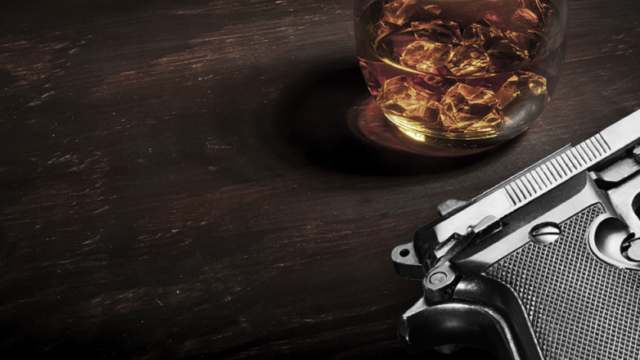Guns in Bars

Summary
Guns and alcohol don’t mix. There is strong evidence that people under the influence of alcohol are at an elevated risk of violent behavior, including gun violence. The public recognizes the danger, and overwhelmingly opposes allowing people to bring guns into establishments where alcohol is consumed. But the gun lobby is currently pushing legislation in several states that would allow people to carry loaded guns in bars. Lawmakers should use common sense and reject the gun lobby’s dangerous effort to spread the threat of alcohol-fueled gun violence to every corner of the country.
The public strongly opposes guns in bars.
Ninety-three percent of Americans think people should not be allowed to bring guns into bars.1David Hemenway et. al., “National Attitudes concerning Gun Carrying in the United States,” Injury Prevention 7 (2001): 282- 85. Alcohol is associated with increased aggression, and people under the influence of alcohol are both more likely to be shot and more likely to kill someone else.
Alcohol is associated with heightened levels of aggression. Alcohol intoxication increases the likelihood of violent behavior. Alcohol has detrimental effects on cognitive functioning, inhibits problem-solving abilities, and increases the likelihood of risk-taking, all of which are directly linked to aggressive behavior.2Ingrid Wilson et al., “Alcohol interventions, alcohol policy and intimate partner violence: a systematic review,” BMC Public Health, Aug. 27, 2014.
Alcohol leads to impaired judgment about whether to shoot a gun, as well as impaired aim when firing.3Charles Casey, Futurity, “Guns, Binge Drinking Go Hand-in-Hand,” June 17, 2011, available at https://www.futurity.org/guns-binge-drinking-go-hand-in-hand/
Nearly half of homicide offenders were under the influence of alcohol at the time of the homicide. The Department of Justice found that 42% of convicted homicide offenders reported being under the influence of alcohol during the commission of their crime.4Jennifer C. Karberg and Doris J. James, Substance Dependence, Abuse, and Treatment of Jail Inmates, 2002, report no. NCJ 209588 (United States Department of Justice, Bureau of Justice Statistics, 2005).
Heavy alcohol use is associated with a higher likelihood of firearm victimization. Controlling for other factors, a case-control study in Philadelphia found that heavy drinkers were more than twice as likely to be shot as nondrinkers.5Branas, “Alcohol Consumption, Alcohol Outlets,” 906.
Recent examples attest to the dangers of guns in bars.
On May 14, 2015, Mark Walck, 51, got into an argument with Raul Castro Jr., 41, inside of a Tucson bar, allegedly drew a handgun, and fatally shot Castro.6Carmen Duarte, “Tuscon Man Turns Himself In; Linked to Shooting at West Side Bar,” Arizona Daily Star, May 16, 2014, http://bit.ly/2dLlYqy.
On April 25, 2015, Derrick Jermaine Boone, 39, got into an altercation with Yusef Wilson, 29, inside of a bar in Williamsport, PA. According to news reports, Wilson threw a chair at Boone, who then drew a handgun and fatally shot Wilson. Two bystanders were also shot and injured.7Bridget Chapman, “Fight leads to shooting at Wapato bar, man dead,” South Bend Tribune, May 30, 2015.
On February 17, 2015, 26-year-old Harvey Scott shot security guard Deion Nesbitt multiple times in a Pittsburgh bar, killing him. He also allegedly shot and injured another security guard during a struggle over the weapon.8Megan Guza, “Pittsburgh police looking for 2 witnesses in shooting death of Homewood security guard,” Pittsburgh Tribune, Feb. 18, 2015.
Learn More:
- Block a Federal Concealed Carry Mandate
- Educate Gun Owners of Risks
- Gun Owner Safety Training
- Guns in Public
- Keeping Guns Out of the Wrong Hands
- Prohibit Guns in Sensitive Areas
- Prohibit Open Carry
- Require Permits to Carry Concealed Guns in Public
- Responsible Gun Ownership
- Strong Standards for Carrying Concealed Guns in Public
Everytown Research & Policy is a program of Everytown for Gun Safety Support Fund, an independent, non-partisan organization dedicated to understanding and reducing gun violence. Everytown Research & Policy works to do so by conducting methodologically rigorous research, supporting evidence-based policies, and communicating this knowledge to the American public.

